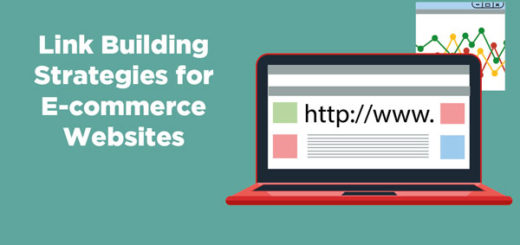How to Optimize Your Google My Business Listing
SEO is expensive, competitive, and hard. But there are many free tools you can use to do optimize your search rankings.
Google My Business is a free tool offered by Google for business owners to manage how their information is listed in search. With Google My Business, you can manage your location on Google maps, the knowledge graph, and online reviews. If you have a local business, you will definitely want to set up your business location on Google My Business so people can find you when they search in Google Maps.
Half of consumers that do a local search on their smartphone end up visiting a store they found there that same day.
When people do a search in Google, they’ll see a map and a list of the top three local listings that are nearby, before they see any other results.

In local searches like this one, users get plenty of information on those top three choices right away – they can see both how other customers have rated each of them and exactly how far away they are. For most consumers, that’s enough information to make a decision and head out, without ever bothering to scroll further down.
For local businesses, it’s equally important make sure that your Google My Business Listing is optimized. Here’s how to optimize your Google My Business listing:
1. Set up your Google Business Listing (if you haven’t yet)
The first step is to set up (or claim) your Google My Business Listing. Go to Google’s My Business page and click “Start Now” in the upper left corner. Then fill in every relevant field that Google offers. You want to make sure the profile is as complete as possible and that every piece of information is accurate.


Don’t have a store front or physical location? You should still have a Google My Business listing! When you first create your Google My Business account, the set up wizard will ask if you want to add a location that customers can visit. If you answer no, you can list your business as a “service area business” to indicate which cities or postal codes you cover.
2. Choose a relevant, specific category
The category you choose will help Google decide which searches your local listing belongs in. You have to choose from the list of available categories, you can’t create your own. If there’s not a specific category that describes what your business is, settle on a more general one that still describes it accurately.
If possible though, you want to go for the most specific category available. “Grocery Store” is a more competitive term than “Gourmet Grocery Store” or “Indian Grocery Store”. The latter categories are more likely to land you in the top three for relevant searches, especially if you’re in a city with a lot of grocery stores.

3. Load quality, high-resolution images
Photos help your listing to stand out and give potential customers a glimpse of what to expect. Make sure you use high-quality images that make your business look good and show off your products (if you sell physical products).
Consider hiring a Google approved photographer to create a 360-view virtual tour of your business for customers. According to Google, listings that have a virtual tour and photos generate twice as much interest as those without.

4. Make sure your information matches everywhere else
One thing Google’s algorithm looks at to verify the legitimacy of a listing is a consistency in how it’s listed across different websites. While that seems simple enough – your address is the same each time you enter it somewhere – it’s easy for little differences to slip in. Maybe you wrote out the Road part of the street name one time, and shortened it to Rd another time, for instance.
Pick a standard way to write out your address, a consistent phone number to use, and make sure all your listings match both each other and the information you provide on your website. And work on getting your website listed in as many relevant directories as possible.
5. Use a local number
In addition to keeping your phone number consistent between your different listings, it’s also important to use a phone number with a local area code. That’s one extra signal to Google that you are actually local. Make sure the number you use for your Google My Business listing is also displayed somewhere on your home page or whatever landing page you link to from your Google listing.
6. Avoid penalty-inducing offenses
Any work you do to optimize your website or local listing will be for naught if you incur a penalty. Google suspends business listings for a range of offenses. Getting suspended is stressful, confusing, and bad for business, so it’s best to avoid doing anything that puts you at risk of it.
Read through Google’s guidelines for Google My Business listings so you have a full understanding of what not to do. Some of the main things to avoid are:
- Using a URL that redirects to your website’s URL, rather than the actual URL itself.
- Trying to awkwardly add keywords into your business name field.
- Having multiple local listings for the same business location.
- Using any address for your business that isn’t a physical storefront or office space where you meet with customers.
Use common sense and don’t try to play the system or get extra listings and you’ll probably stay on the right side of Google.
7. Encourage reviews
You’ll notice that the local businesses listed in the map snippet of a local search usually have star ratings next to their name. Google wants to provide the most useful information to its users, and users want to find the nearby business that seems the best. In both cases, it benefits your business to have a high star rating.
Ask your happy customers to take a few minutes to give you a review on Google. Include an encouragement on promotional materials you hand out or put up in your store. A gentle nudge or a reminder of how much it means for your business can make your loyal customers that much more likely to take the time to say a few kind words about you.
8. Make sure your website and content is optimized for search
All the usual SEO advice that helps strengthen the authority of your website in the eyes of Google matters here too. So don’t focus on optimizing your local listing to the exclusion of optimizing your website as well.
Make sure that you:
- Incorporate relevant keywords into the meta tags and copy on each page, where you can do so naturally.
- Add schema markup to your website.
- Create content with a local focus.
- Look for local linking opportunities.
A strong website that’s optimized for both your customers and search engines will be that much more likely to make it into the list of the top three in a local Google search.
Local SEO takes some time and work, but the payoff can be big. You want to be easy to find when someone in your city is looking for what you sell, and Google is the best way to get in front of your customers at that exact moment. Don’t let the opportunity slip by because you didn’t take the time to properly optimize your Google My Business listing.
Source: Hostgator’s Blog








